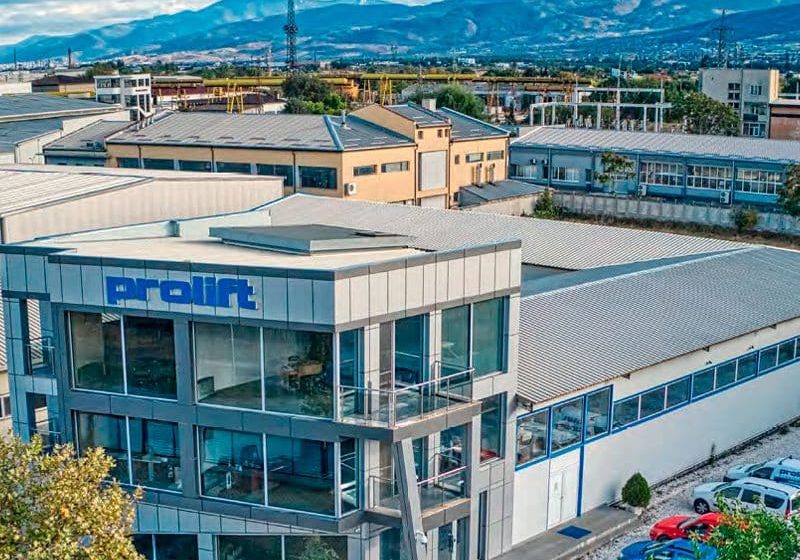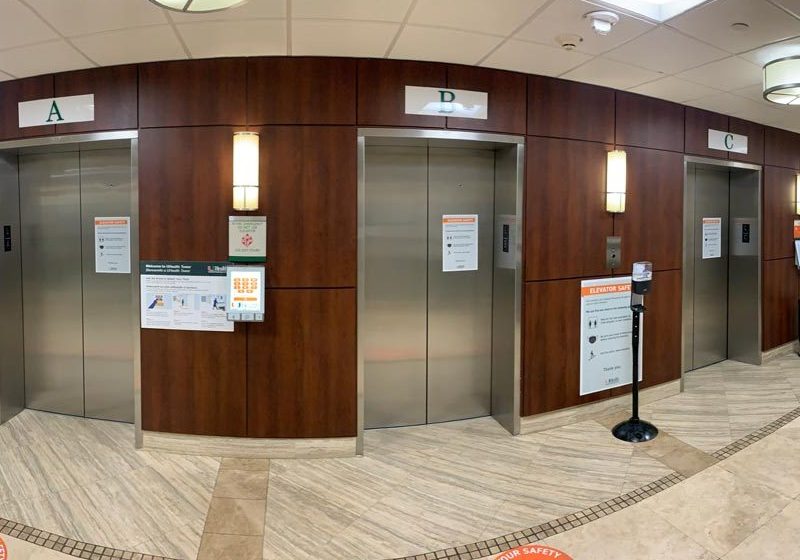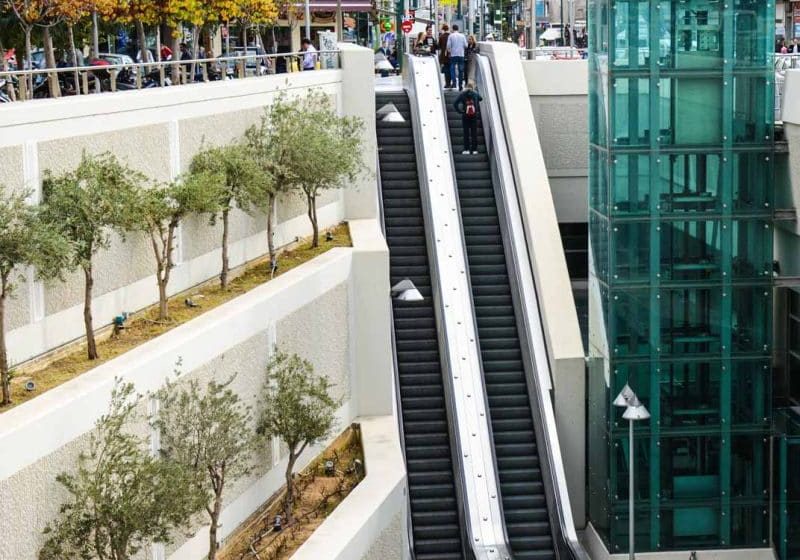Ingenuity by Design
Apr 1, 2021

The evolution of an elevator handrail installation system is detailed in this Company Spotlight.
A machinist by trade, Hans Joachim Lindemann of Selingenstadt, Germany, created the first sketches of what would eventually become the e-li elevator handrail fixing system in 2009. Technical manager at Selingenstadt-based BeLi, Lindemann was seeking a new approach to mounting door handles, bath accessories, handrails and the like. In 2011, after two years of development, Lindemann and his son, BeLi General Manager Tim Lindemann, presented the e-li fixing system to the first customers in the elevator market in Germany, and interest was strong.
Installing handrails in elevator cabs is usually one of an experienced mechanic’s easiest jobs, the Lindemanns observe. When onsite conditions only allow installation from within the cab, however, the job can rapidly become a challenge. This is the case in cab modernizations or remodels. A misaligned hole or lack of reinforcement on the outer cab wall is all it takes to turn an otherwise simple installation into a real problem, the Lindemanns point out. The Lindemanns, and their customers, said e-li succeeds in solving it.
“My father’s sketches were the beginning of e-li handrails for elevators,” Tim Lindemann said. “The product name comes from ‘easy link’ and describes the idea my father had when he designed the system: to install a handrail or door handle easily, quickly and securely on a wall.”
Success with e-li led to further innovation: a reinforcement solution for elevator cabin walls that could be installed by one technician. Tim Lindemann points out that today’s elevator walls are extremely thin — 1 mm or so — and typically made of very light material, such as aluminum, with a honeycomb structure inside. To affix a handrail to such walls, a reinforcement on the walls’ backside was needed. Enter Strong Spine, which Hans Lindemann designed and introduced to the public in 2013. e-li and Strong Spine achieved patents in 2016 and 2017, respectively.
Coming standard with e-li, Strong Spine provides an 8-cm S-form or 6-cm C-form support area on the back of the wall. Although primarily for elevator handrails, Strong Spine has also been used to secure heavy display screens to elevator walls. Such was the case at a high-profile installation in NYC: the elevator modernization at PENN1 (formerly 1 Penn Plaza) (p. 80) in Midtown Manhattan being handled by CEC Elevator Cab Corp. CEC Executive Vice President Nick Gretsuk said:
“One of the elevator walls includes a 70-in. LCD monitor behind a glass panel. This application led to several issues related to how to hang the monitor, which weighs approximately 200 lb, as well as provide the ability to hinge the glass wall for access to the monitor and access to input and cabling attachments on the back. We fabricated custom, reinforced hinge assemblies and mounted those directly to the steel shell wall with C-form supports. Since that time, not one monitor, wall panel or hinge assembly has failed or moved.
To iterate the hold of the Strong Spine devices would take some calculation. We have more than 1,080 lb of glass wall and 200 lb of monitor traveling at up to 1,400 ft/min and coming to a complete stop on a hydraulic buffer over a distance of approximately 21 in. as the elevator first hits the buffer at full speed and comes to a complete stop.”
Success with e-li led to further innovation: a reinforcement solution for elevator cabin walls that could be installed by one technician.
As for the full-wall glass panels, Gretsuk said using an ordinary Z-clip would have resulted in failure. Each weighing approximately 550 lb, the panel assemblies are composed of laminated glass mirrors, aluminum honeycomb structural backing, aluminum channel support and bronze edging. With elevators traveling at up to 1400 ft/min, the stress of the elevator buffer testing would have ripped the panels off the walls, shearing conventional fasteners, he said.
Since mechanics could not access the outside of the elevator walls to bolt through the outside, CEC used a combination of conventional fasteners along with four Strong Spine C-form supports per wall.
Assemblies Gain Popularity
BeLi’s first orders for e-li in the U.S. came in 2019 through distributor Seymour Technologies of Weston, Connecticut. This built on existing sales in Germany, Austria, Switzerland, the Netherlands, Belgium, Greece, Sweden and the U.K. The product is sold as either a complete handrail package or separately so other manufacturers can incorporate it. Customers include elevator companies, cabin manufacturers and elevator subcontractors. BeLi gets the word out via tradeshows such as LiftEx in London and Interlift in Augsburg, Germany; social media; and referrals.
Tim Lindemann said handrails with e-li are stable and can be quickly and simply mounted by one mechanic. He continued:
“During an elevator modernization or cab remodel, it is often necessary to drill the mounting holes for the handrail on-site. This means elevator mechanics might have to deal with misaligned holes. [e-li solves this problem] with ±5 mm compensation for drilling misalignment in all directions. Compared to conventional fixing systems that use set screws, e-li handrails are fixed by a solid and interlocking system that provides greater stability.”
[The conventional solution involving two mechanics] is a difficult and time-consuming ‘tightrope act’ that costs nerves and money and isn’t always without incident.
BeLi General Manager Tim Lindemann
The combination of e-li and Strong Spine backs flexibility with strength, Tim Lindemann said. Because the space between the shaft and cab wall is so tight — typically 3-5 cm — mechanics have no direct access from behind the cab, he pointed out. Conventional solutions require at least two mechanics, one of whom must apply a strengthening plate to the outside of the wall — either from the cabin roof or the pit — while the other mounts the handrail from inside the cabin, he said. “This is a difficult and time-consuming ‘tightrope act’ that costs nerves and money and isn’t always without incident.” Tim Lindemann elaborated:
“From within the cabin, a 2-cm mounting hole is drilled in the cabin wall. The mechanic feeds the Strong Spine through this hole and pulls it tight so it exerts even pressure across the whole surface of the cabin wall. Mounting the e-li handrail to the wall creates a strong and positive connection, ensuring high handrail stability. Handrail movement is thereby prevented. Given that elevator walls are made of sheetmetal panels of sometimes unknown thickness, the stability and degree of stiffness achieved by the Strong Spine is [significant] regardless of where the handrail is mounted on the panel…. Installation time is greatly reduced.”
Quality Control
e-li handrails are produced under stringent quality controls by BeLi in Germany. Manufacturing capabilities include computer numerical control (CNC) lathes, CNC milling machines, grinding/polishing machines for rounded handrail tubes, TIG welding and assembling capability. Manufactured using just-in-time techniques, the handrails and components can be supplied on short notice. The product range encompasses straight handrails, curved handrails, continuous handrails and bespoke solutions.
Clients like Dartford, U.K.-based Elan Lifts Ltd. appreciate BeLi’s just-in-time delivery. BeLi and U.K. supplier Kapok 88 delivered two complete stainless-steel handrails for elevators in the historic U.K. House in London, Elan Director Tony Fillery observed, “We ordered on October 8 and they were delivered on October 13, and these dates included a weekend.”
Since debuting e-li 12 years ago and Strong Spine a few years later, business has only grown, and, despite the pandemic, demand continues, according to Tim Lindemann. “Current business outlook points to the steady growth of the past few years continuing,” he said.
Roots in German Industry
Necessity and hard times proved to be the mother of invention for Hans Joachim Lindemann and his son, Tim. In 2009, in the midst of the global financial crisis, the pair realized they needed to develop a product with a unique selling proposition. “My father’s first thought was that we needed to create something new that we could make ourselves that was a real improvement over a previous product or application.” Thus, the e-li elevator handrail system and Strong Spine were born.
The groundwork was already in place for BeLi Maschinenbau to manufacture the products. BeLi was founded by Tim Lindemann’s parents in 1989 with partner Roland Beetz. (The company name stands for “Beetz” and “Lindemann.”)The company manufactured milled mechanical parts for German industry. While Beetz left the company in 1994, Tim Lindemann joined it in 2004 after completing his studies in Business Administration.
Prior to all that, Hans Lindemann worked at his father’s company, ELA Spezialmashinenbau OHG, founded in 1946 to manufacture and develop components such as punching machines and dashboards for the German automotive industry. “During this time, my father gained the knowledge to develop, design and manufacture machines and mechanical gadgets for various applications,” Tim Lindemann said. That knowledge would prove to serve him well in the future.
Get more of Elevator World. Sign up for our free e-newsletter.









